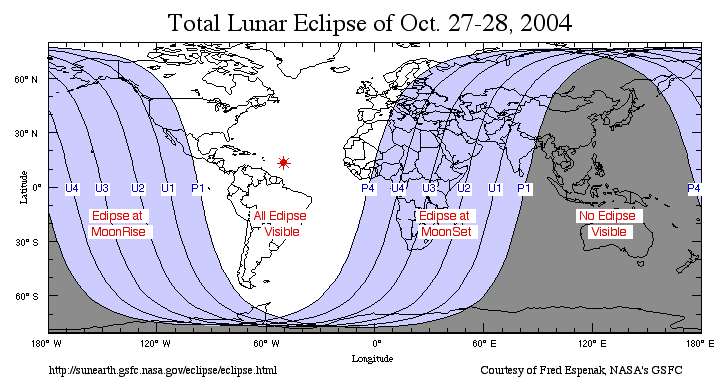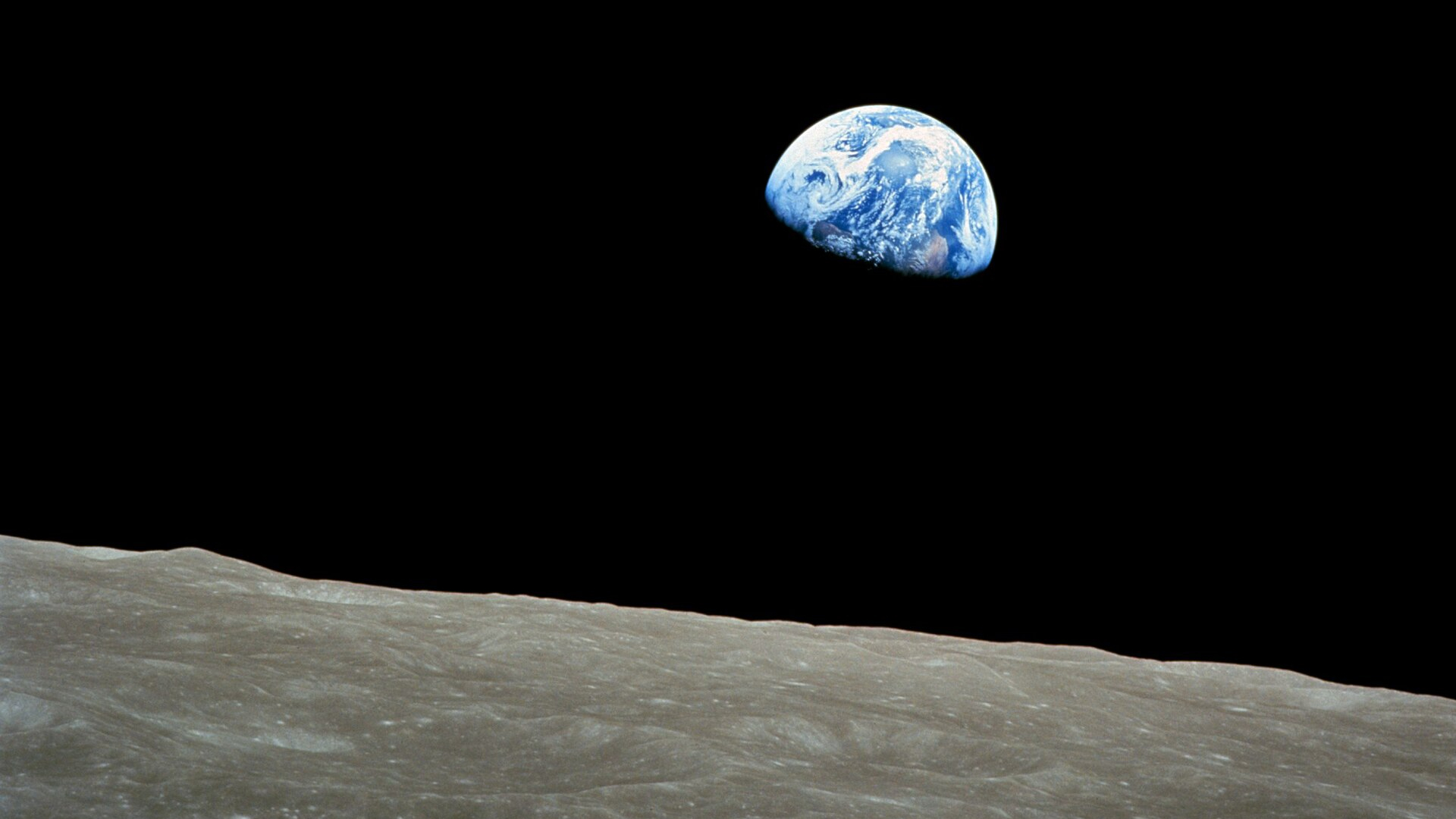Last Chance Until 2007: Total Lunar Eclipse Tonight!

Post Event: Pictures of the eclipse are here.
Skywatchers on half the planet are gearing up to watch Earth's shadow consume a blood-red Moon tonight in the last total lunar eclipse until 2007.
Weather permitting, the easy-to-watch event will be visible across most of North and South America, Western Europe and Africa. It will be webcasted live from several locations, and glimpses might be televised during Game 4 of the World Series.
The eclipse begins at shortly after 8 p.m. ET (5 PT), but the first hour or so won't be noticeable as the Moon becomes lightly shaded by Earth's outer shadow, called the penumbra. Things get real interesting at 9:14 p.m. ET (6:14 PT, when the Moon begins sliding into Earth's full shadow, or umbra.
A dark and growing scallop will then gradually envelop Earth's only natural satellite. Once in total shadow at 10:23 p.m. ET (7:23 PT), the Moon might turn a shade of deep red that frightened the ancients. No two eclipses are alike, however, and astronomers can't say for sure what color to expect, if any.
What's going on
Lunar eclipses occur when Earth's shadow prevents sunlight from reflecting off the Moon. They can only occur during full Moon, and only on the relatively rare occasions when the Moon's orbit carries it into the same plane of space as Earth's path around the Sun.
Breaking space news, the latest updates on rocket launches, skywatching events and more!
The schedule is predictable but somewhat erratic.
There have been four total lunar eclipses during the past 18 months, but there won't be another one until March 3, 2007.
During totality, when the Moon is completely immersed in shadow, it might turn red, the result of Earth's atmosphere bending hints of all the world's sunrises and sunsets simultaneously onto the Moon while the Sun's primary light is blocked.
Totality lasts until 11:45 p.m. ET (8:45 PT).
"The Moon will never be completely dark," explained Charles Schweighauser, professor of astronomy and physics at the University of Illinois at Springfield.
"The color of the Moon in shadow will range from a coppery color to dark red, depending on the amount of dust and water vapor in the Earth's atmosphere."
Easy to watch
Telescopes are not needed to enjoy a lunar eclipse, but binoculars or a low-power telescope will enhance the color, astronomers advise. Otherwise, warm clothing and perhaps a lounge chair and a hot beverage are all that's needed to enjoy the show.
"Unlike solar eclipses, lunar eclipses are completely safe to watch," said Fred Espenak, a veteran eclipse forecaster at NASA.
People in parts of western Asia will glimpse a bit of the eclipse, and it will be visible from all of Canada and Central and South America. People in the western United States will miss the earliest stages, when the Moon is in the penumbral shadow of Earth.
"But this is the least interesting and [least] dramatic part of the eclipse," Espenak said. "The more important and photogenic partial and total phases will be visible from all of North America with the exception of Alaska."
The eclipse will play out as fans watch the World Series tonight in St. Louis. As first reported by SPACE.com Friday, it will be the first eclipse in history to occur during a World Series game. Depending on the plans and whims of FOX television producers and camera operators, and the weather, shots of the eclipse could be broadcast to the largest audience ever to see one.
Several live webcasts of the eclipse are planned from many countries, so even though some locations will be clouded out, viewing opportunities remain high. [List of Webcasts]
- Top 10 Eclipse Facts
- Viewer's Guide to the Oct. 27 Lunar Eclipse
- Eclipse Picture from May 4, 2004
- Eclipse Pictures from Nov. 8, 2003
- Eclipse Pictures from May 15, 2003
- Moon News, Lore and Photos

Starry Night software brings the universe to your desktop. Map the sky from your location, or just sit back and let the cosmos come to you.

Rob has been producing internet content since the mid-1990s. He was a writer, editor and Director of Site Operations at Space.com starting in 1999. He served as Managing Editor of LiveScience since its launch in 2004. He then oversaw news operations for the Space.com's then-parent company TechMediaNetwork's growing suite of technology, science and business news sites. Prior to joining the company, Rob was an editor at The Star-Ledger in New Jersey. He has a journalism degree from Humboldt State University in California, is an author and also writes for Medium.


